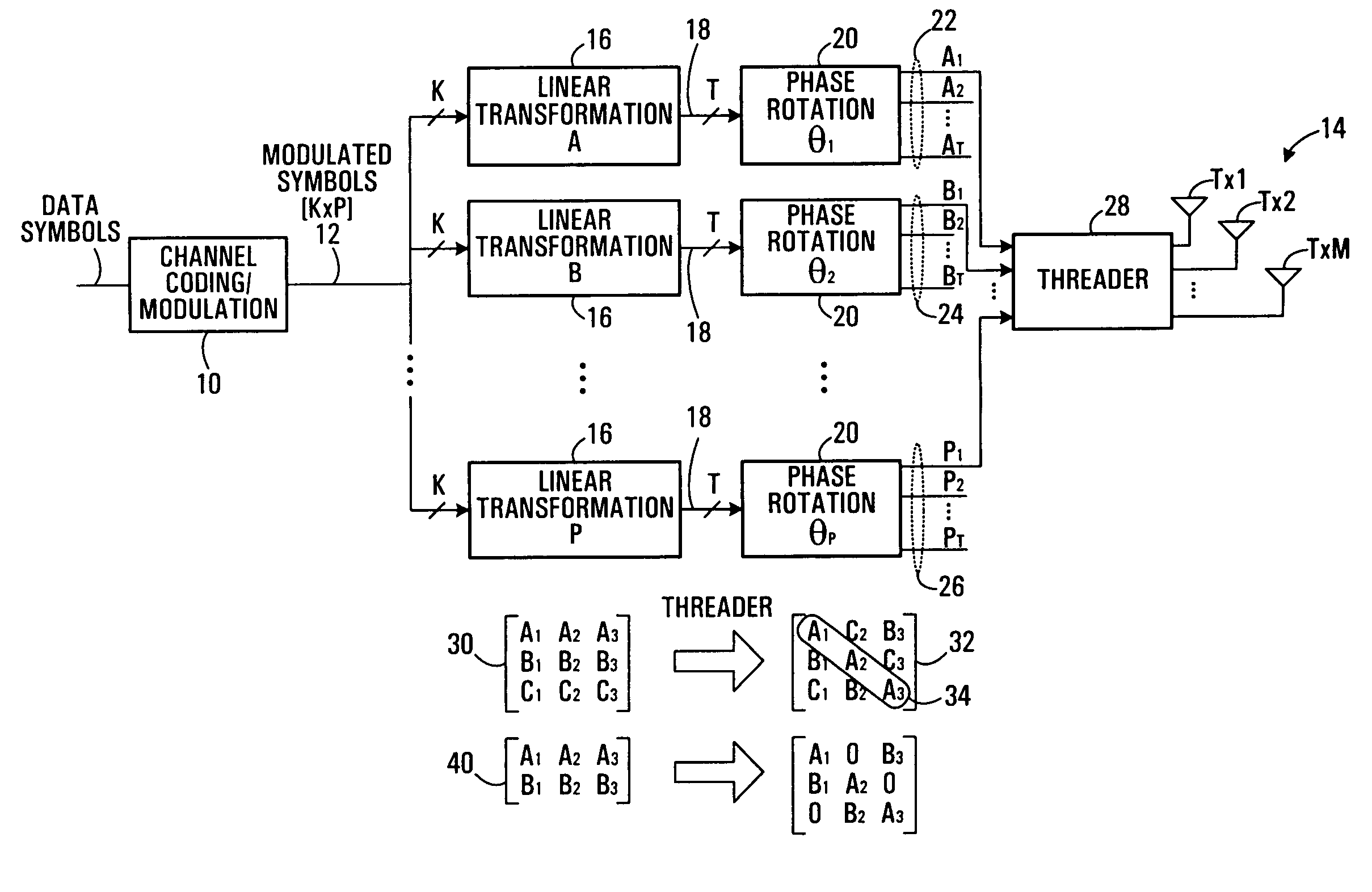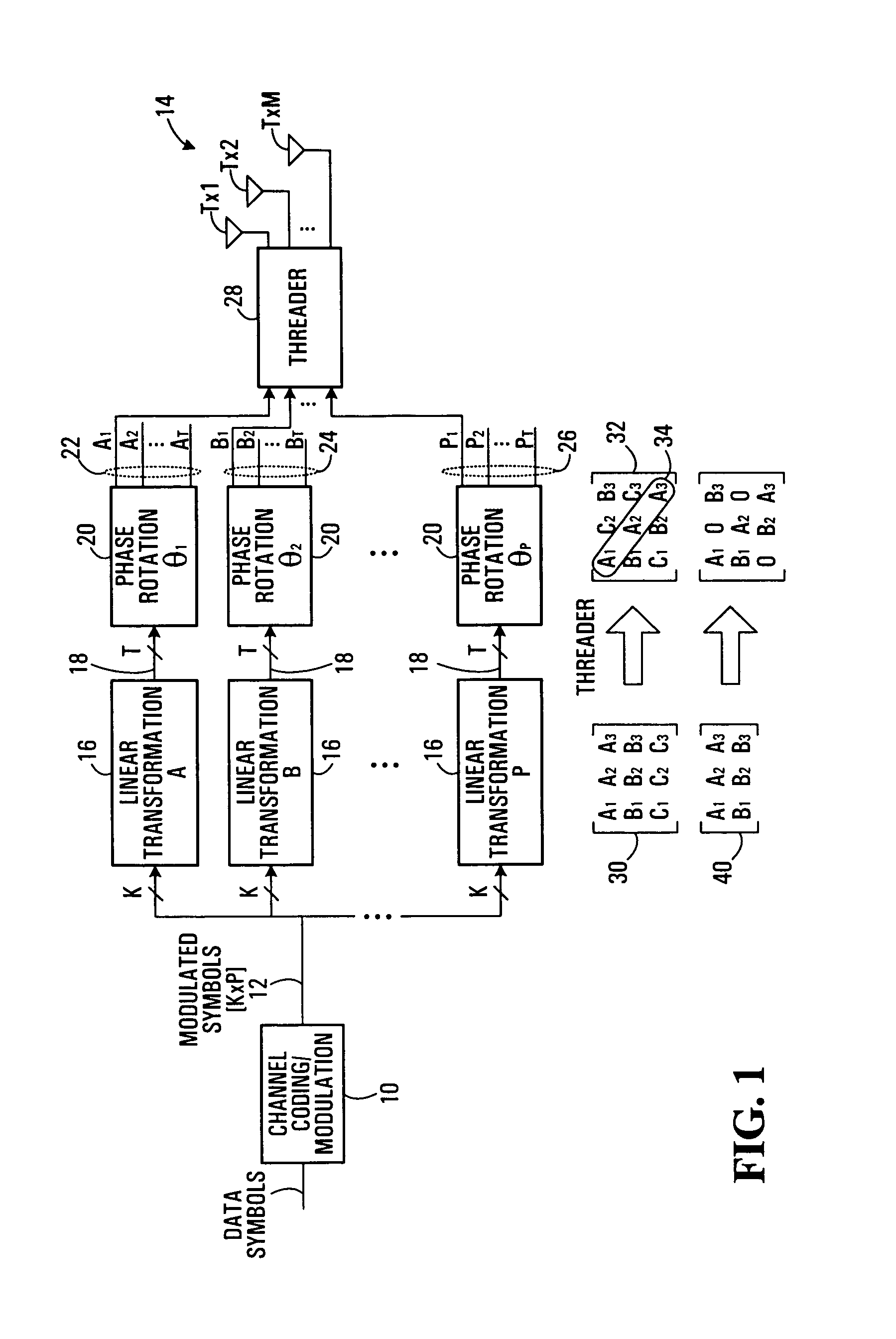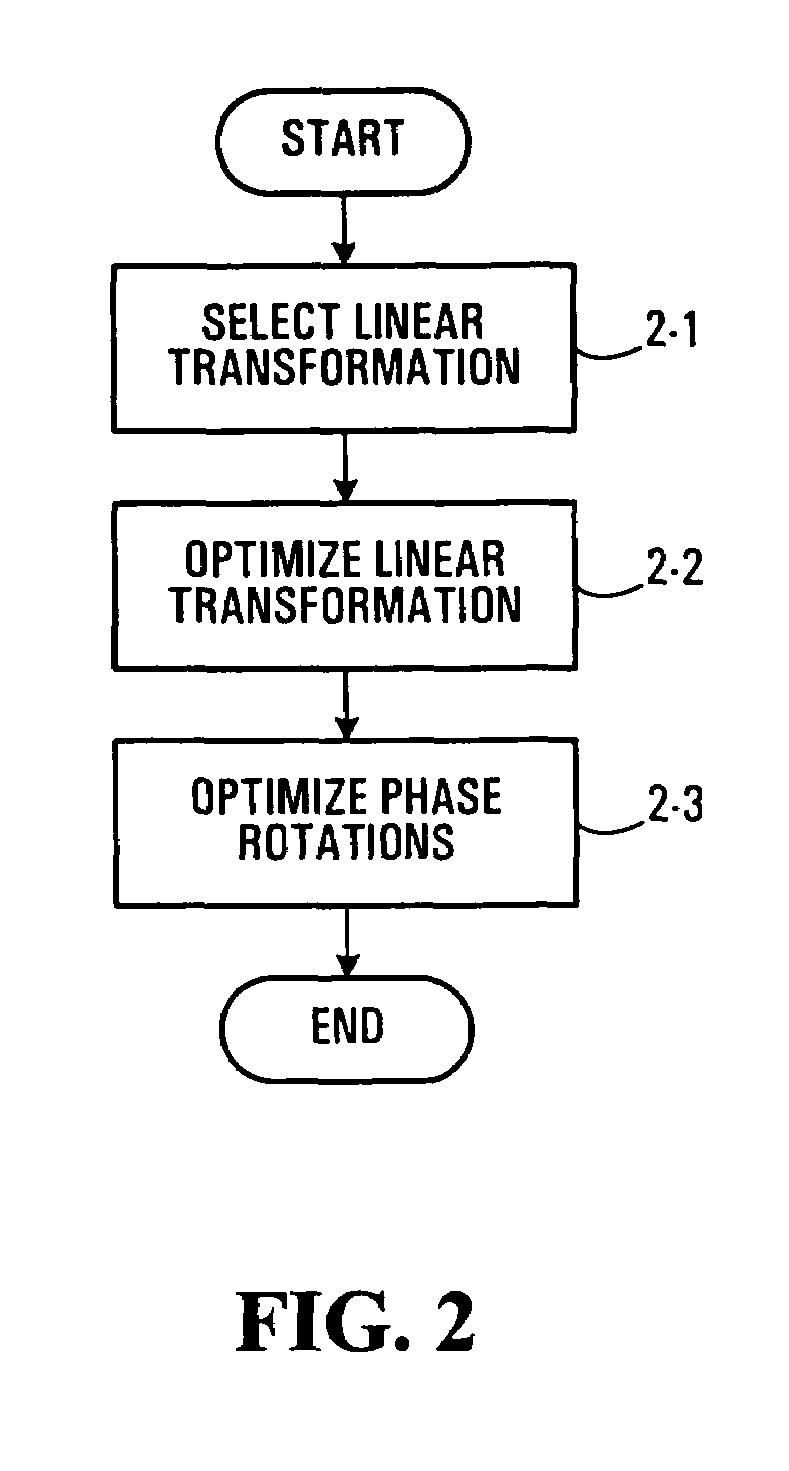Method of systematic construction of space-time constellations, system and method of transmitting space-time constellations
a space-time constellation and constellation technology, applied in the field of space-time constellations, can solve the problems of many challenges in the design of space-time (st) signals that exploit the available capacity of multi-transmitting antennas or multi-transmit/multi-receiving antenna systems
- Summary
- Abstract
- Description
- Claims
- Application Information
AI Technical Summary
Benefits of technology
Problems solved by technology
Method used
Image
Examples
first example
[0046]Further details of this example can be found in M.O. Damen, H. El Gamal and N.C. Beaulieu, “Linear Threaded Space-Time Constellations,” IEEE Transactions on Information Theory, vol. 49, pp. 2372-2388, October 2003, hereby incorporated by reference in its entirety.
I. Notation
[0047]The following notations are used throughout this example: The letter R denotes a ring, Z the ring of integers, Z[i] the ring of complex integers (or Gaussian integers with iΔ√{square root over (−1)}), Z[j] the ring of Eisenstein integers (with jΔe2iπ / 3). The letter F denotes a field, Q the field of rational numbers, R the field of real numbers, and C the field of complex numbers. For n integer, wnΔe2iπ / n denotes the n-th root of unity, and Z[wn] is the ring of algebraic integers in the n-th cyclotomic number field Q(wn). For nm and n integers, (n|m) denotes their greatest common divisor (if m and n are co-prime, then (n|m)=1). The number of integers less than n and co-prime with it is given by the Eul...
second example
[0083]Further details of this example can be found in M. O. Damen, H. El Gamal and N. C. Beaulieu, “Systematic Construction of Full Diversity Algebraic Constellations,” IEEE Transactions on Information Theory, vol. 49, pp. 3344-3349, December 2003, hereby incorporated by reference in its entirety. For this example, equation numbering is restarted at (1).
I. System Model
[0084]We consider signaling over an M×N multi-input multi-output (MIMO) channel. A K×1 information symbol vector u=(u1, . . . , uk)TεUK, where U denotes the input constellation, is mapped by a constellation encoder γ into an MT×1 output vector γ(u), with components from the alphabet
[0085]∏i=1MT(i.e.,Siγ:UK→∏i=1MTSi).
In general, we allow the transmitted single dimensional constellation Si to vary across time and space. All the proposed constellations, however, will enjoy the symmetry property that |Si|=|Sj|. In this work, we also assume that the information symbol vector is a random variable with a uniform distrib...
examples
[0138]1. M divisible by L=min(N,M)
For L=N=1, the proposed constellation reduces to that given by (27). In this case, {tilde over (M)}(1, . . . , 1)T, and γj(uj)=φ(j-1) / M{tilde over (M)}uj are the full diversity component encoders. For M=4, L=N=2, we have
[0139]D4,4,2(u)Δ=14(s11ϕ3 / 4s42ϕ2 / 4s31ϕ1 / 4s22ϕ1 / 4s21s12ϕ3 / 4s41ϕ2 / 4s32ϕ2 / 4s31ϕ1 / 4s22s11ϕ3 / 4s42ϕ3 / 4s41ϕ2 / 4s32ϕ1 / 4s21s12)(32)
where (sk1,sk2)T=M(uk1,uk2)T, k=1, . . . , 4, with M the optimal 2×2 complex or real full diversity rotation, and uk1,uk2εZ[i], k=1, . . . , 4. One proves that φ=eiπ / 16 (of degree 4 over the field containing the 2×2 optimal complex rotation) achieves full diversity over all QAM constellations. Moreover, we have found the Diophantine number φ=e2iπ / 7 achieves a local optimum of the coding gain for the 4-QAM constellation in this configuration. Note that the benefit of using a repetition code when L divides M is the small degree of the algebraic number field that contains the ...
PUM
 Login to View More
Login to View More Abstract
Description
Claims
Application Information
 Login to View More
Login to View More - R&D
- Intellectual Property
- Life Sciences
- Materials
- Tech Scout
- Unparalleled Data Quality
- Higher Quality Content
- 60% Fewer Hallucinations
Browse by: Latest US Patents, China's latest patents, Technical Efficacy Thesaurus, Application Domain, Technology Topic, Popular Technical Reports.
© 2025 PatSnap. All rights reserved.Legal|Privacy policy|Modern Slavery Act Transparency Statement|Sitemap|About US| Contact US: help@patsnap.com



